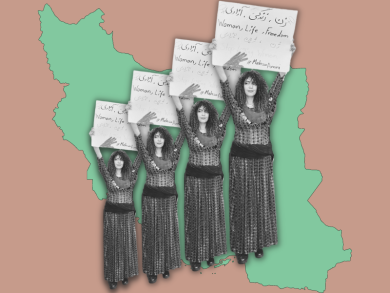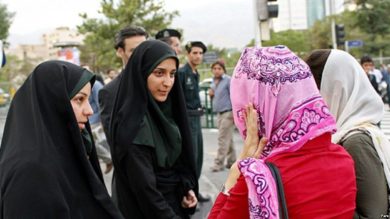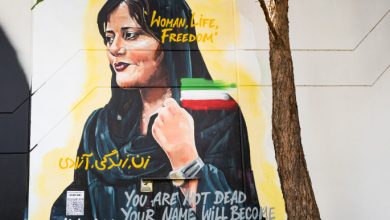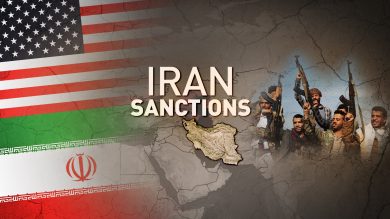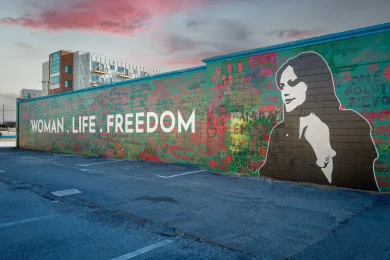Protests across Iran have become increasingly common as activists, students, women, and ethnic minorities challenge the Islamic Revolutionary Guard Corps (IRGC) and its grip on political, social, and economic life. The Women, Life, Freedom movement sparked by Mahsa Amini’s death in 2022, alongside long-standing grievances over corruption, poverty, and repression, has escalated into widespread demonstrations demanding systemic change. This article explores how Iranian activists are confronting the IRGC’s authority, the methods they use to resist repression, and the global implications of their struggle.
1. The Role of the IRGC in Suppressing Protests
The IRGC functions as both a military and political force, tasked with maintaining the Islamic regime’s ideological supremacy. Through its Basij militia and intelligence units, the IRGC plays a key role in suppressing dissent.
A. Crackdowns on Protesters
• The IRGC employs violence, including live ammunition, tear gas, and beatings, to disperse demonstrations.
• Mass arrests are a common tactic, with protesters often subjected to torture and forced confessions in detention.
B. Surveillance and Censorship
• The IRGC enforces internet blackouts and censorship, cutting off activists from global communication networks.
• Cyber units track activists online, using surveillance tools to identify and target protest leaders.
2. Key Drivers of the Protests
The protests are driven by a combination of economic hardship, political repression, and social inequality, with the IRGC seen as a symbol of the regime’s corruption and brutality.
A. Economic Mismanagement
• The IRGC’s control over key industries has worsened Iran’s economic crisis, contributing to inflation, unemployment, and widespread poverty.
• Many protesters blame the IRGC’s corruption and monopolistic practices for deepening inequality.
B. Human Rights Violations
• Activists have long criticized the IRGC for its role in human rights abuses, including extrajudicial killings and gender-based violence.
• The death of Mahsa Amini became a rallying point for demands to end morality policing and gender oppression.
C. Ethnic and Religious Discrimination
• Minority groups, including Kurds, Baloch, and Arabs, face systemic repression by the IRGC. These communities have become hotspots for resistance, with activists calling for both ethnic rights and political freedom.
3. Activist Strategies and Tactics
Despite harsh repression, Iranian activists have developed creative strategies to resist the IRGC’s control.
A. Digital Activism and Information Warfare
• Activists use encrypted messaging apps like Signal and Telegram to organize protests and share updates.
• Videos documenting police brutality and crackdowns are circulated on social media, raising global awareness.
B. Decentralized Protest Movements
• To evade arrests, activists adopt decentralized leadership structures, making it difficult for the IRGC to target key organizers.
• Protests occur simultaneously in multiple cities, spreading security forces thin.
C. Symbolic Acts of Resistance
• Public removal of hijabs, cutting hair, and burning headscarves have become powerful symbols of defiance.
• Activists chant slogans such as “Women, Life, Freedom” and “Death to the Dictator” to challenge the regime’s legitimacy.
4. Stories of Courage
A. Women on the Frontlines
• Nasrin, a 25-year-old activist, described how she defied security forces during a Tehran protest: “They threatened us with guns, but we stood together. We’ve had enough of fear.”
• Women have led many of the protests, demanding an end to gender discrimination and violence.
B. Minority Voices Rising
• In Zahedan, Baloch activists have held weekly protests despite repeated massacres by the IRGC.
• Kurdish activists in Sanandaj continue to resist despite heavy military crackdowns, calling for justice and equal rights.
5. International Support and Solidarity
Global solidarity has played a crucial role in supporting Iranian activists and exposing the IRGC’s abuses.
A. Protests and Advocacy
• Iranian diaspora communities have organized protests worldwide to amplify the voices of those on the ground.
• International human rights organizations have documented IRGC atrocities, increasing diplomatic pressure on Iran.
B. Sanctions on the IRGC
• Countries like the United States and Canada have imposed sanctions targeting IRGC leaders and entities involved in human rights violations.
• Activists call for stronger enforcement of these measures to weaken the IRGC’s financial networks.
6. Challenges and Risks for Activists
Despite their resilience, activists face significant risks from the IRGC’s repression.
A. Physical and Psychological Trauma
• Many protesters endure beatings, imprisonment, and torture. Survivors often struggle with trauma and fear of retaliation.
• Families of activists are frequently harassed, with some forced to flee the country.
B. Cyber Threats and Digital Surveillance
• The IRGC uses cyberattacks and phishing schemes to infiltrate activist networks.
• Activists risk arrest if their communications are intercepted.
7. The Path Forward
To sustain their fight, Iranian activists need both internal resilience and global support.
A. Strengthening Digital Security
• Activists require access to secure communication tools and cybersecurity training to protect their networks.
• International tech companies can assist by providing free VPNs and encrypted platforms.
B. Expanding Sanctions and Accountability
• Targeted sanctions should focus on IRGC officials and entities responsible for human rights abuses.
• Global bodies like the UN must push for independent investigations into the regime’s crimes.
C. Empowering Civil Society
• Support for independent media, human rights groups, and whistleblowers can help counter IRGC propaganda.
• Humanitarian aid and economic relief are essential to alleviate the suffering of ordinary Iranians.
Conclusion
Iranian activists are demonstrating extraordinary courage and ingenuity in their fight against the IRGC’s authoritarian control. Through digital resistance, grassroots organizing, and global solidarity, they continue to challenge the regime’s legitimacy. The international community must stand with them, supporting their quest for freedom, justice, and human rights.
Join Our Newsletter!
Stay informed with the latest updates, news, and ways to take action in the fight for justice and global security. Sign up now to get updates delivered straight to your inbox!

